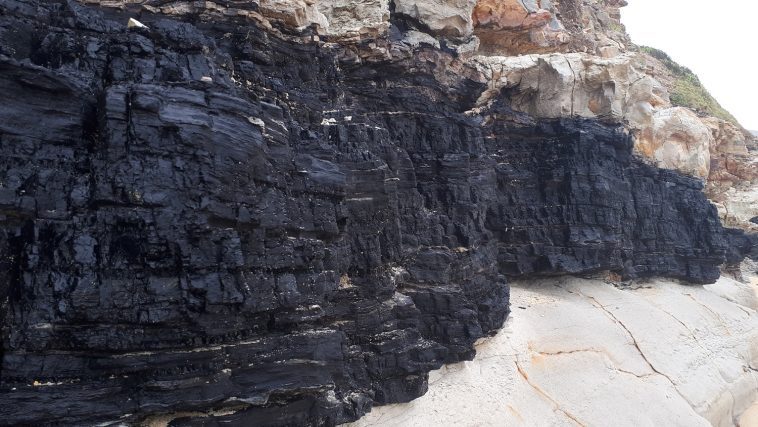[Originally published as Coal Beds and Noah’s Flood]
Creationists believe coal beds form from plant debris catastrophically buried by Noah’s Flood about 4,500 years ago. Evolutionary geologists often object to the creationists’ explanation of coal bed formation, so what are their arguments, and what answers do we give to them?
Evolutionists believe that the material in coal beds accumulated over millions of years in quiet swamp environments like the Everglades of Florida.
Some geologists have claimed that even if all the vegetation on earth was suddenly converted to coal, this would make a coal deposit only 1-3% of the known coal reserves on earth. Hence at least 33 Noah’s Floods are needed, staggered in time, to generate our known coal beds. Therefore a single Noah’s Flood cannot be the cause of coal formation.
This argument was developed using valid estimates of the volume of vegetation currently on today’s land surfaces. But it also relies on the assumption that at least 12 metres of vegetation are needed to produce one metre of coal (e.g., Holmes, 1965).
Modern research shows that less than two metres of vegetation are needed to make one metre of coal. Some observations made by coal geologists working in mines (e.g., the compaction of coal around clay “balls” included in some coal beds) suggest that the compaction ratio is probably much less than 2:1 and more likely very close to 1:1.
These observations destroy this objection to coal bed formation during Noah’s Flood since instead of today’s vegetation volume only compacting down to 1-3% of known coal reserves, today’s vegetation volume would compact down to at least 30% of the known coal reserves.
But where did the other 60% come from?
Two other factors are relevant here.
The evolutionists’ argument based on the volume of vegetation on today’s land surface ignores the fact that 60% of today’s land surface is covered by deserts or only sparse vegetation. In addition, there are the vast icy wastes of Antarctica beneath which are rock layers containing thick coal beds.
So if all of today’s land surface was covered with the lush vegetation suggested by Antarctica’s coal beds, then the volume of such vegetation on today’s land surface would be sufficient to produce at least another 50% of the known coal reserves.
What about the remaining 10%?
The other unquestioned assumption of the uniformitarian geologist is that the area of land surface available for vegetation growth has always been the same. This assumption simply is not correct.
In Genesis 1:9-10 we are told of God’s work at the outset of the third day of Creation Week when He gathered the waters (which initially covered the entire globe) into one place so as to let the dry land appear. God called the waters “seas” (plural), but they were gathered together in one place. The language used in Scripture leaves room for potentially much more land area then on the face of the globe than “seas” (see Taylor, 1982).
It is possible that there was at least twice as much land area available for vegetation growth in the pre-Flood world compared with today’s world (i.e. at least 60% land versus 40% sea in the pre-Flood world compared with today’s roughly 30% land verses 70% oceans). If then this vast land area was under lush vegetation, then we could account for 100% of the known coal reserves.
A Better Way
But there is another way of comparing vegetation growth and volume with the known coal beds, a way that is probably far more reliable, and this is by comparing the stored energy in vegetation with that in coal.
An international authority on solar energy, Mary Archer, has stated that the amount of solar energy falling on the earth’s surface in 14 days is equal to the known energy of the world’s supply of fossil fuels. She also said that only .03 % of the solar energy arriving at the earth’s surface is stored as chemical energy in vegetation through photosynthetic processes. (Journal of Applied Electrochemistry, Vol. 5, 1975, p. 17) From this information, we can estimate how many years of today’s plant growth would be required to produce the stored energy equivalent in today’s known coal reserves:
Divide 14 days by .03%
(14 x 100)/.03 days equal 46,667 days or 128 years of solar input via photosynthesis.
So we can conclude that only 128 years of plant growth at today’s rate and volume is all that is required to provide the energy equivalent stored in today’s known coal beds! There was, of course, ample time between Creation and Noah’s Flood for such plant growth to occur – 1600 years, in fact.
Conclusion
Either way, whether by comparison of energy stored in vegetation growth and in coal (i.e. the time factor) or by vegetation growth, climate, geography, land area and compaction ratio (i.e. the volume factor), we can show conclusively that the evolutionist’s objection is totally invalid. There was ample time, space and vegetation growth for Noah’s Flood to produce all of today’s known coal beds.







